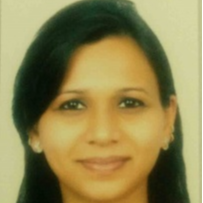
Charu Gupta
Work place: Department of Computer Science Engineering, Bhagwan Parshuram Institute of Technology, New Delhi-110089, India
E-mail: charugupta@bpitindia.com
Website:
Research Interests: Natural Language Processing
Biography
Dr. Charu Gupta graduated B.E. in Computer Science and Engineering and completed M.Tech from JSS Academy of Technical Education, Noida in Computer Science and Engineering with Honors. She received her Doctoral degree from the Department of Computer Science, Banasthali Vidyapith, Rajasthan, India. Presently serving as assistant professor at Bhagwan Parshuram Institute of Technology (Affiliated to GGSIPU, Dwarka), Delhi with a teaching experience of 10 years. She has to her credit research publications in various National and International Journals/Conferences of repute (SCIE/ESCI/SCOPUS). She is a reviewer, section editor and editorial member of many international journals/conferences. She is also a member of Encyclopedia of Neutrosophic Researchers, Vol. 3, Book edited by Prof. Florentin Smarandache, University of New Mexico. She is a subject matter expert in VIDWAN, an MHRD project on Expert Database and National Researcher’s Network. Vidwan-ID: 136697. She is a Research Associate with Nokia in “Invent with Nokia” venture. She has been the co-convenor of various webinar series and faculty coordinator of National and International Conferences at BPIT. She is the Lead Editor and Co-Editor in various book series by Wiley, De Gruyter, Nova publishing and many more. She has to her credit various sessions in National and International Conferences. She is a faculty coordinator (Delhi Section) of Free and Open Source Cell (FOSS cell) from International Centre for Free and Open Source Software (ICFOSS), Govt. of Kerala, India. She is also the faculty co-ordinator of e-Yantra Lab setup initiative (eLSI) in collaboration with IIT Bombay & Anusandhan Research Lab in Department of Computer Science and Engineering, BPIT. She has also served as a Coordinator for Software Engineering for GGS Indraprastha University (IPU) B.Tech syllabus designing committee. Her areas of interest are Natural Language Processing, Neutrosophic logic and its applications, Time Series Analysis and Forecasting, Evolutionary Computation.
Author Articles
Ensem_SLDR: Classification of Cybercrime using Ensemble Learning Technique
By Hemakshi Pandey Riya Goyal Deepali Virmani Charu Gupta
DOI: https://doi.org/10.5815/ijcnis.2022.01.07, Pub. Date: 8 Feb. 2022
With the advancement of technology, cybercrimes are surging at an alarming rate as miscreants pour into the world's modern reliance on the virtual platform. Due to the accumulation of an enormous quantity of cybercrime data, there is huge potential to analyze and segregate the data with the help of Machine Learning. The focus of this research is to construct a model, Ensem_SLDR which can predict the relevant sections of IT Act 2000 from the compliant text/subjects with the aid of Natural Language Processing, Machine Learning, and Ensemble Learning methods. The objective of this paper is to implement a robust technique to categorize cybercrime into two sections, 66 and 67 of IT Act 2000 with high precision using ensemble learning technique. In the proposed methodology, Bag of Words approach is applied for performing feature engineering where these features are given as input to the hybrid model Ensem_SLDR. The proposed model is implemented with the help of model stacking, comprising Support Vector Machine (SVM), Logistic Regression, Decision Tree, and Random Forest and gave better performance by having 96.55 % accuracy, which is higher and reliable than the past models implemented using a single learning algorithm and some of the existing hybrid models. Ensemble learning techniques enhance model performance and robustness. This research is beneficial for cyber-crime cells in India, which have a repository of detailed information on cybercrime including complaints and investigations. Hence, there is a need for model and automation systems empowered by artificial intelligence technologies for the analysis of cybercrime and their classification of its sections.
[...] Read more.Other Articles
Subscribe to receive issue release notifications and newsletters from MECS Press journals